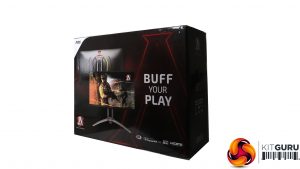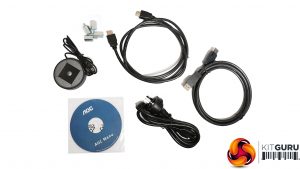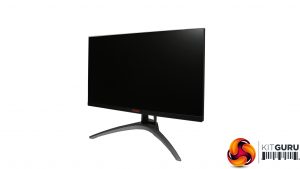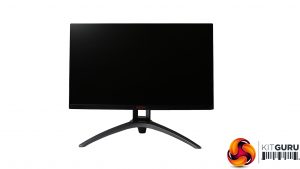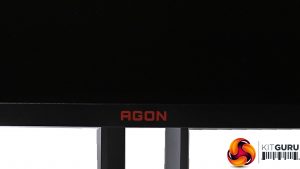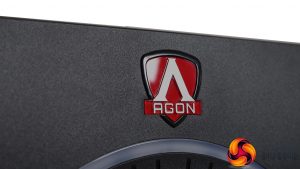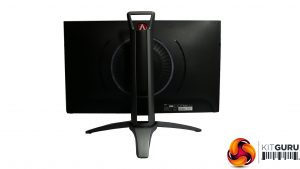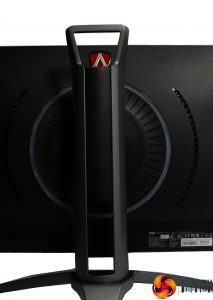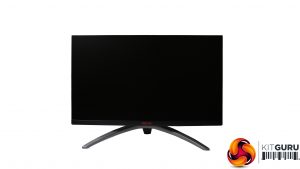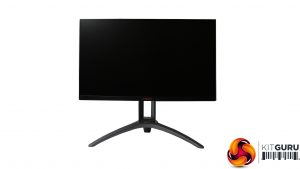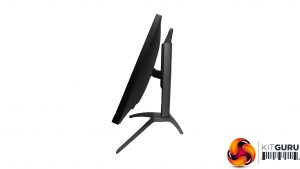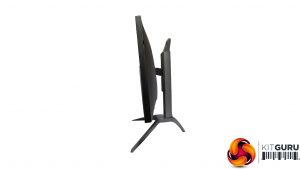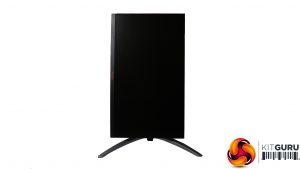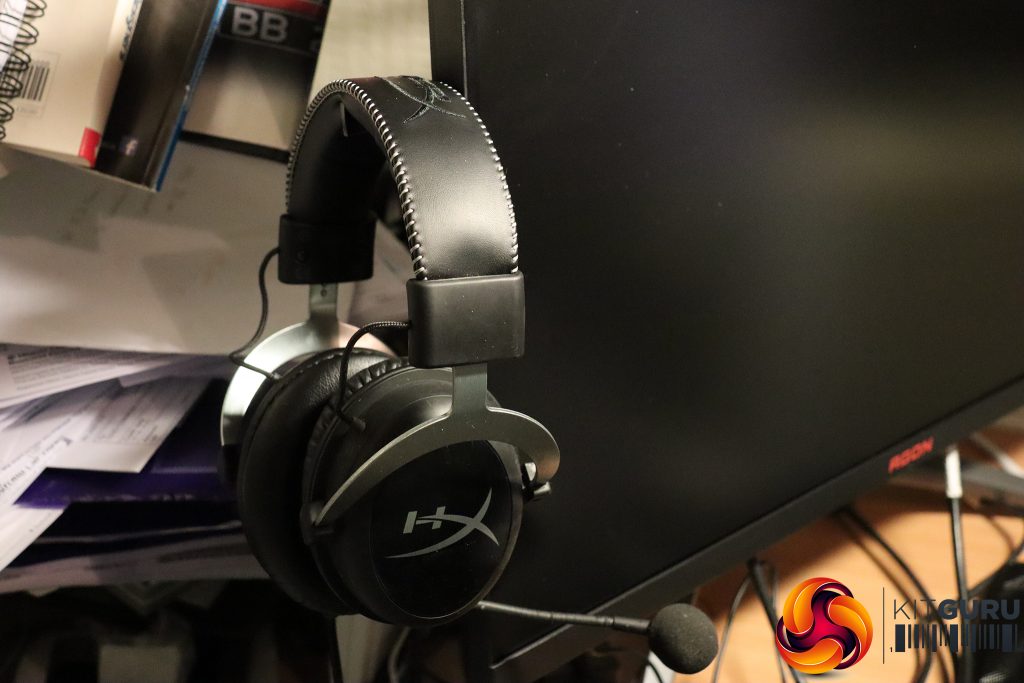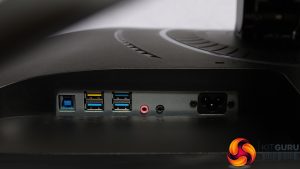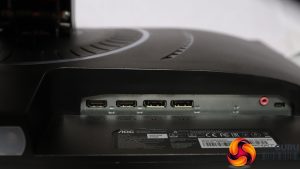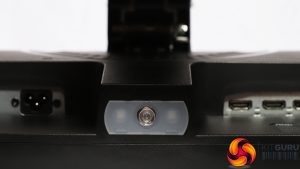The AOC AGON AG273QZ‘s box almost feels small compared to the huge ultra widescreens we have seen so many of recently.
Inside the box is the usual power cord and one each HDMI and DisplayPort cables. You also get some spacers for VESA mounting, plus the separate control puck for the menu system, which will make selection options more convenient.
However, there didn't appear to be a USB upstream cable with our sample, which is particularly annoying considering that this monitor also supports the Windows-based G-Menu software that can control the screen settings from directly within Windows.
The AG273QZ has a very sober appearance like other members of the AOC AGON range. Apart from the logo flashes on the bottom of the bezel and top of the rear, it's basically black, and mostly matte black too.
However, when the screen is on you do get RGB lighting on the ring around where the screen attaches to the stand, so that will provide a little more visual excitement.
Adjustments include swivelling 32 degrees left and right, raising or lowering across a 110mm range, and tilting 5.5 degrees forward or 21.5 degrees backward. It's also possible to rotate the screen around into portrait mode.
There's a headphone hook on each side that can be slid out like a cupholder.
The ports are liberally arranged either side of the bottom edge of the stand. The left-hand side from the front (shown on the right above) is where the video ports are located, including two HDMI 2.0 and two DisplayPort 1.4. Note that you will need to use one of the latter for 240Hz refresh. HDMI 2.0 only supports 144Hz at this monitor's resolution. Further along is a microphone input and the connection for the external control puck. The one omission here is USB-C.
The other side of the stand is home to the power plug, analog minijacks for microphone input and combo headset, plus the four-port USB 3.2 Gen1 hub, with one yellow port that is always on even when the monitor is otherwise powered down.
There's a central joystick for controlling the menu, which is placed under the bezel directly behind where the central logo is located. However, we suspect you will want to use the separate control puck instead for most control functions.
 KitGuru KitGuru.net – Tech News | Hardware News | Hardware Reviews | IOS | Mobile | Gaming | Graphics Cards
KitGuru KitGuru.net – Tech News | Hardware News | Hardware Reviews | IOS | Mobile | Gaming | Graphics Cards


